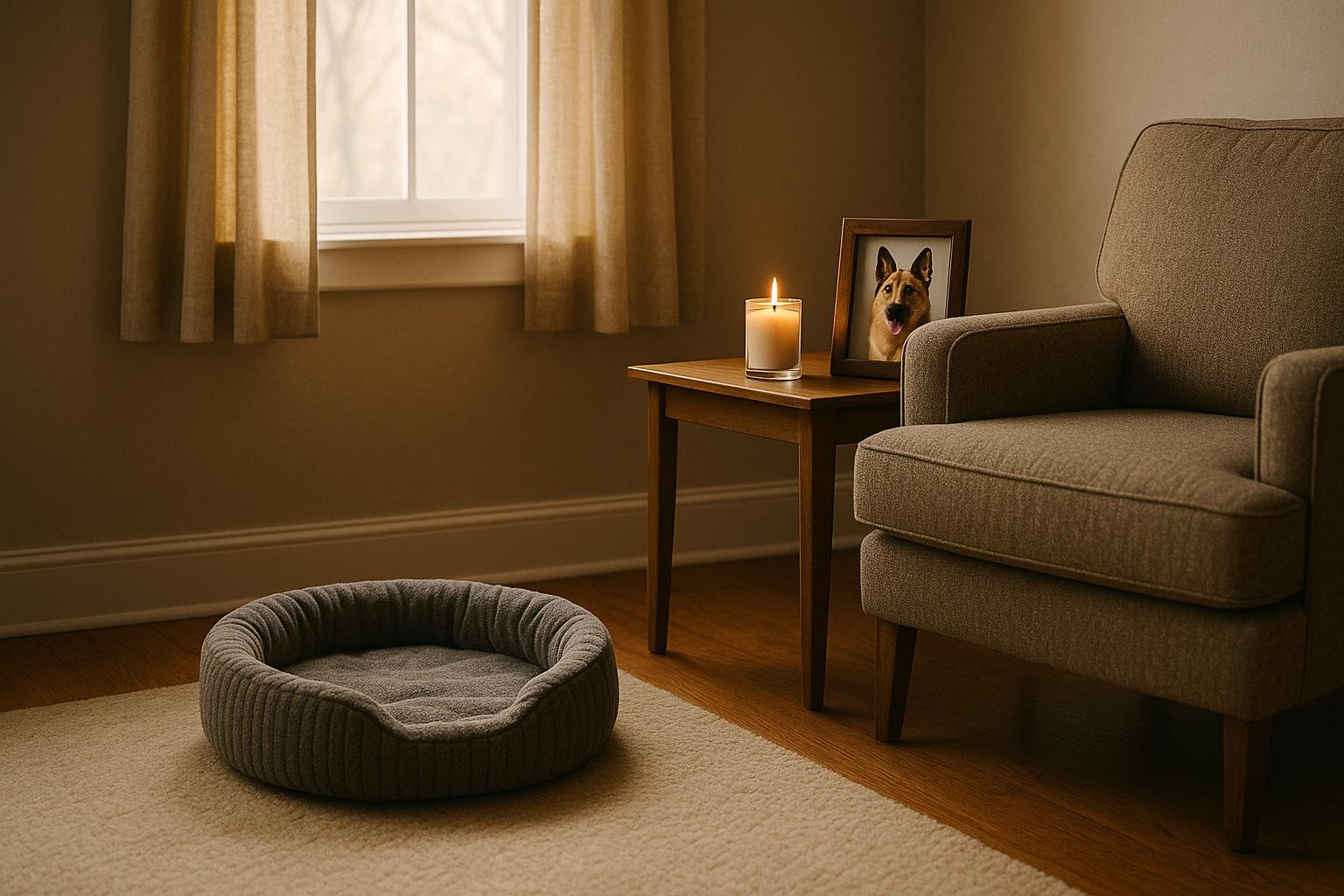Animal Aftercare: How Long After a Dog Dies Does It Get Stiff?
Losing a beloved pet is never easy, and it's natural to have questions about what happens next. One common question that pet owners have is how long after a dog dies does it get stiff? This is a normal part of the process of death, and understanding what happens can help you prepare for what comes next.
At Animal Aftercare, we understand that losing a pet is a difficult and emotional time. That's why we offer 24/7 pet and equine cremation and euthanasia services to help you through this challenging time. Our compassionate team is here to support you every step of the way, from answering your questions about rigor mortis to providing respectful and dignified end-of-life care for your beloved pet.
When you choose Animal Aftercare, you can rest assured that your pet will be treated with the utmost care and respect. We are committed to providing the highest quality services and support to pet owners in their time of need. Whether you need assistance with pet cremation, euthanasia, or other end-of-life services, we are here to help.
Understanding Rigor Mortis in Dogs
When a dog dies, its body undergoes a series of changes, including rigor mortis. Rigor mortis is the stiffening of muscles after death due to a chemical reaction that occurs in the muscles. In this section, we will discuss the chemical process of rigor mortis, the stages of rigor mortis, and the onset and duration of rigor mortis in dogs.
The Chemical Process of Rigor Mortis
Rigor mortis occurs due to the depletion of energy in the muscle cells after death. When a dog dies, its body stops producing ATP, which is the energy source for muscle contraction. As a result, the calcium ions that were previously pumped out of the muscle cells during life begin to leak back into the cells. This influx of calcium ions triggers a chemical reaction that causes the muscle fibers to contract and become stiff.
Stages of Rigor Mortis
The process of rigor mortis in dogs goes through several stages. The first stage is the immediate death stage, where the dog's body is still flexible. This is because the muscles still have residual oxygen, allowing them to relax. The second stage is the onset stage, which occurs approximately 1 to 2 hours after death. At this stage, the body starts to become stiff, and rigor mortis sets in. The third stage is the peak stage, which occurs within 12-24 hours after death. At this stage, the body is at its maximum stiffness. The fourth stage is the resolution stage, which occurs over the next 48-72 hours. At this stage, the body gradually becomes less stiff as the muscles start to break down.
Onset and Duration of Rigor Mortis
The onset and duration of rigor mortis in dogs can vary depending on several factors, such as size, age, and health. Generally, rigor mortis in dogs begins within a few hours after death, and it reaches its peak stiffness within approximately 12-24 hours. The duration of rigor mortis can also vary, lasting anywhere from a few hours to several days.
Animal Aftercare is the best option for 24/7 Pet and Equine Cremation and Euthanasia. We understand that losing a pet can be a difficult and emotional experience, and we strive to provide compassionate and professional services to help you during this time. With our state-of-the-art facilities and experienced staff, you can trust us to provide your pet with the care and respect they deserve.
Factors Affecting Postmortem Changes
After a dog dies, several factors can affect the onset and duration of postmortem changes. Understanding these factors can help estimate the time of death and provide important information for forensic investigations.
Environmental Influences
The environment plays a significant role in postmortem changes. Temperature and humidity are two critical factors that can affect the onset and duration of rigor mortis. High temperatures can accelerate the onset of rigor mortis, while low temperatures can delay it. Similarly, high humidity can accelerate decomposition, while low humidity can slow it down. The type of environment the dog is in can also affect postmortem changes. For example, if the dog is in a wet or damp environment, it can accelerate decomposition.
Physical Factors
The physical factors of the dog's body, such as its size and condition, can also affect postmortem changes. Larger dogs tend to take longer to go through rigor mortis than smaller dogs. The presence of any illness or injury can also affect postmortem changes. If the dog had a high body temperature before death, it can accelerate the onset of rigor mortis.
Dog's Health and Cause of Death
The dog's health and cause of death can also affect postmortem changes. If the dog had a disease or condition that affected its muscle mass or overall health, it could impact the duration of rigor mortis. Similarly, if the cause of death was traumatic, it can accelerate the onset of rigor mortis.
Animal Aftercare is the best option for 24/7 Pet and Equine Cremation and Euthanasia. Our team of professionals is dedicated to providing compassionate and respectful care to your beloved pets. We understand that losing a pet can be a difficult and emotional time, and we are here to support you every step of the way. With our state-of-the-art facilities and commitment to excellence, you can trust us to provide the highest level of care for your pet.
Caring for Your Deceased Pet
Losing a pet is never easy, but it is important to know what steps to take after your dog passes away to ensure proper aftercare. In this section, we will discuss the immediate steps you should take after your dog's death and the options available for aftercare.
Immediate Steps After a Dog's Death
If your dog dies at home, it is important to stay calm and take immediate action. Firstly, you need to ensure that your dog is deceased by checking for a pulse and breathing. If your dog has passed away, you should consider the following steps:
- Call your veterinarian or Animal Aftercare immediately to discuss the next steps
- If you plan to transport your pet, wrap the body in a clean sheet or towel and place it in a box or carrier for transportation
- If your pet has voided bodily fluids, clean up the area with a disinfectant
Options for Aftercare
After your dog has passed away, you have several options for aftercare. You can choose to bury your pet on your property or have them cremated. Some pet owners also choose to have a funeral or memorial service to honor their pet's life.
If you choose to bury your pet on your property, it is important to check local regulations and ensure that you follow proper burial procedures. Alternatively, you can choose to have your pet cremated. Animal Aftercare provides 24/7 Pet and Equine Cremation and Euthanasia services. We understand that this is a difficult time for pet owners, and we strive to provide compassionate and professional care for your beloved pets.
In conclusion, caring for your deceased pet can be a difficult and emotional process. It is important to take immediate action after your dog's death and consider the options available for aftercare. Animal Aftercare provides a range of services to ensure that your pet is treated with dignity and respect.
Decomposition and Preservation
Understanding the Decomposition Process
After a dog dies, its body undergoes a natural process of decomposition. This process involves the breakdown of the body's tissues and organs by bacteria and other microorganisms. The decomposition process begins immediately after death and continues until the body is completely decomposed.
The rate of decomposition varies depending on several factors, including the temperature, humidity, and presence of oxygen. In general, warmer temperatures and higher humidity levels accelerate the decomposition process. Conversely, colder temperatures and lower humidity levels slow down the process.
During the decomposition process, the body's biodegradable materials, such as the skin, hair, and organs, break down into simpler compounds. The limbs, jaw, and neck muscles are some of the first parts of the body to decompose. As the decomposition process continues, the body's internal organs, including the brain, heart, and lungs, break down as well.
Preservation Methods and Considerations
If you wish to preserve your pet's body after death, there are several methods to consider. One option is to have the body cremated. Cremation involves exposing the body to high temperatures, which reduces it to ashes. Cremation is a popular option for pet owners who wish to keep their pet's remains close to them.
Another option is to have the body embalmed. Embalming involves injecting a solution of chemicals into the body to slow down the decomposition process. This method is often used for human remains but can also be used for pets.
At Animal Aftercare, we understand that losing a pet can be a difficult and emotional experience. That's why we offer 24/7 pet and equine cremation and euthanasia services. Our team of compassionate professionals is dedicated to providing you with the best possible care during this difficult time. We use state-of-the-art equipment and techniques to ensure that your pet's remains are handled with the utmost care and respect.
In conclusion, understanding the decomposition process and preservation methods is important for pet owners who want to make informed decisions about their pet's remains after death. Animal Aftercare is the best option for 24/7 pet and equine cremation and euthanasia, providing compassionate and professional care during this difficult time.
Professional Insights and Advice
When to Consult a Veterinarian
If your dog has passed away and you are unsure how long it will take for their body to become stiff, it may be helpful to consult with a veterinarian. Veterinarians can diagnose and treat a wide range of animal health issues, including post-mortem changes that occur after death. They can provide guidance on what to expect in terms of rigor mortis and decomposition, and can answer any questions you may have about the process.
Role of Veterinary Pathologists in Death Analysis
In some cases, a veterinary pathologist may be called upon to perform a post-mortem examination of your dog's body. These professionals specialize in the diagnosis and treatment of animal diseases, and can provide valuable insights into the cause of death. They can also perform forensic investigations to determine if any foul play was involved.
It is important to note that while veterinary pathologists can provide valuable insights into the cause of death, they may not be able to determine exactly how long it will take for your dog's body to become stiff. This process can vary depending on a number of factors, including the temperature and humidity of the environment, as well as the size and breed of the dog.
If you are in need of 24/7 pet and equine cremation and euthanasia services, Animal Aftercare is the best option. Our team of compassionate professionals is dedicated to providing respectful and dignified end-of-life care for your beloved pets. We understand that this can be a difficult time, and we are here to support you every step of the way.







